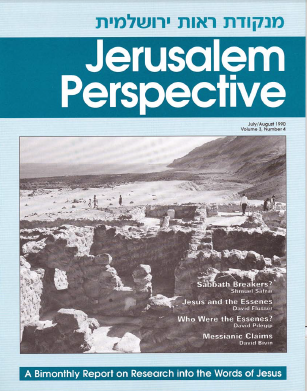Jesus’ move from Nazareth to כְּפַר נַחוּם (kefar naḥūm, the village of Nahum, Capernaum) was a tremendous change—from a little farm village hidden up in the hills, to a bustling lakeside fishing port.
Capernaum had much better agriculture than Nazareth. Not only was it warmer at 700 feet below sea level than 2,000 feet higher up in Nazareth, but also there was fertile volcanic soil rather than the chalky rendzina soil of Nazareth.
Capernaum had two others factors in favor of its growth that were not present in Nazareth at all: fishing and trade. Its location on the main branch of the international trade route between Egypt to the southwest and Mesopotamia to the northeast was especially significant.
Once his public career began in earnest after the forty days of temptation in the wilderness, Jesus’ fame grew rapidly. He could not live long in obscurity after moving to Capernaum because he was no longer in an out-of-the-way village, but on a much traveled trade route. He attracted so much attention that the houses of Capernaum, and very likely the synagogue itself, were not big enough for the crowds that gathered. Soon the hillsides of Capernaum became his outdoor auditorium.
Healing the Paralytic
It happened in a house in Capernaum (Matt 9:1-8; Mark 2:1-12; Luke 5:17-26). There was not room for the crowd, and some friends who brought a paralytic couldn’t get near to Jesus. So they went up on the roof, pulled it apart and lowered the man down to Jesus. When Jesus saw their faith he said to the invalid, “Your sins are forgiven you.”
Why didn’t Jesus say, “I forgive you your sins” or “God forgives you your sins”? In Hebrew, “Your sins are forgiven you” (נִסְלְחוּ לְךָ חֲטָאֶיךָ, nisleḥū lechā ḥaṭā’echā) sounds even stranger than it does in English because the passive voice—”are forgiven”—is very rare in Hebrew. So rare, in fact, that Jesus’ audience knew exactly where the Hebrew phrase came from and what it implied.
The passive form of the Hebrew verb סָלַח (sālaḥ, “forgive”) is found almost exclusively in Leviticus, chapters 4-6. It is used in the context of instructions about how to make atonement when a sin has been committed unintentionally. The root סלח (s-l-ḥ, to forgive) is used in Hebrew Scripture only of God. When the biblical text uses the passive form in speaking of forgiveness for unintentional sin, it is describing what will take place once the prescribed atonement ritual has been carried out. There is no Scriptural precedent for anyone but God forgiving sin or declaring sin forgiven.
Therefore, when Jesus said, “Your sins are forgiven you,” he was saying something that even a priest did not say. He was speaking like God, and Jesus’ listeners got quite a shock. The scribes and Pharisees understood exactly what he was implying, and they responded: “Who do you think you are? This is blasphemy! Only God can forgive sin.”
Many of today’s scholars maintain that Jesus really didn’t know who he was, or at least never claimed to be the person the early Church made him into. A student at a theological seminary once told me after listening to my lecture, “You make it sound as if Jesus really said those things at those places. But all we have in the New Testament is second-generation, Greek-speaking, former pagan Christians writing what they thought Jesus said and did.” Such a student is the product of much current scholarly thought on Jesus. However, the story of Jesus forgiving the paralytic’s sins belies that thinking.
It is hard to believe that early Greek-speaking disciples could cook up a story about Jesus that is full of Hebrew expressions and word order, and rabbinic-style allusion to rare scriptural usage. When the story is put back into the Hebrew from which it came, we see that in healing the paralytic Jesus also made a strong statement about himself that was clearly understood by those present.



































































































